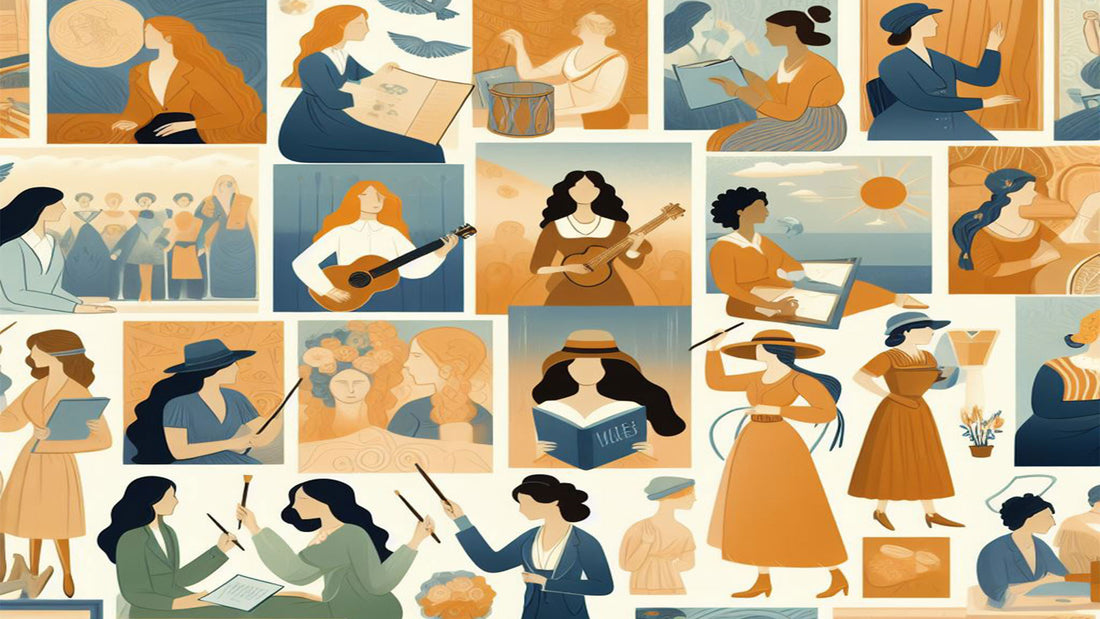By Jamie Whitlow | 11/28/2023
According to a study conducted by Deborah Gustlin, female artists represent 20% of content used in the six most popular art history textbooks from 2010-2015. While underrepresented throughout history, there are numbers of female artists that helped shape the eras of art they inhabited. Looking at Renaissance-era art in Europe, three Italian painters were at the top of their game, creating masterful work within a male-dominated craft. Barbara Longhi, a Mannerist painter, exhibits a lifetime of classical Renaissance work with noticeable stylistic changes throughout. Fede Galizia, while multi-disciplinary in subject matter, helped influence the growth of Still Life painting throughout Europe. Artemisia Gentileschi, an Italian Baroque painter, used her self-portrait as a cultural symbol for her status as a painter amongst her male counterparts. Today, we celebrate these painters as masters in their craft, acknowledging the capabilities of women in art and beyond throughout history.

“Madonna Con il Bambino”
Barbara Longhi
Barbara Longhi (1552-1638)
Barbara Longhi was a Mannerist painter who was trained by modeling and copying the works of her artist father. While it is difficult to determine the chronological order of her paintings that have been discovered, many art historians attempt to do so by identifying stylistic changes, such as changes in composition and increasing brilliance of color. This is exemplified in the comparison of her earlier paintings with her late-career paintings, with the latter displaying a greater sense of intimacy between the virgin and child. Because historians are unaware of Longhi’s patrons, it is difficult to determine the saints that are depicted in her religious paintings. It is claimed that the reason for the lack of recognition, as well as a minimal number of recovered paintings by the artist, are a result of Longhi being only known in her local town of Ravenna.

“Still Life”
Fede Galizia
Fede Galizia (1578-1630)
While her subject matter ranged widely, including portraits and devotional scenes, Fede Galizia is recognized as an important figure in the development of European still-life painting. Her naturalistic still-life paintings were primarily of fruits, with simple and frontal composition. Galizia’s technique of layering colors to develop detail displays her incredible skill, and also eliminates the possibility of her paintings being created by her male contemporaries. Many of Galizia’s paintings were originally attributed to Panfilo Nuvolone, details such as color template and painterly strokes determine that several of these were misattributed. Overall, Galizia was a very influential figure in the development of still life fruit paintings in Europe.

“Self Portrait as the Allegory of Painting”
Artemisia Gentileschi
Artemisia Gentileschi (1593-1656)
While Gentileschi’s painterly talent went unnoticed for many years of art history, her painting Self Portrait as the Allegory of Painting displays an intellectual and cultural self-awareness of the artist within her profession. At a time where painting and sculpture were not yet considered fine arts, painters would create self-portraits to desired to raise the status of the profession of artists. Artists would depict themselves wearing gold chains, to emphasize their nobility as a ranked member of the court by royalty. These hints displayed in Artemisia Gentileschi’s Self Portrait as the Allegory of Painting shows her attempt to establish and display her status as a female painter.
These female artists are just a few of the masterful examples of women in art throughout history. Want to see some more? Support women in art and check out the work of some of our partners!

